What is the Average Markup on Diamonds?
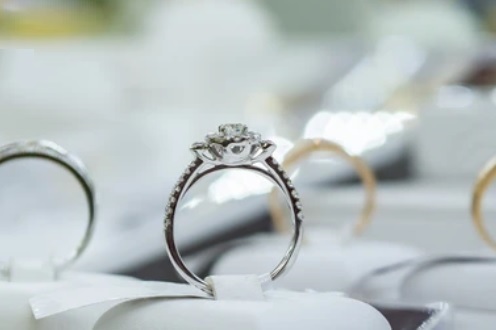
Diamonds have a reputation for being expensive and most people have the impression that jewelers make a lot of money. But, is that true?
Are jewelers raking in huge profits on diamonds because they are overpriced? How much do jewelers pay for their diamonds? What is the average markup on diamonds?
These are all valid questions that a curious consumer may find hard to ask or get direct answers to. More importantly, I’m sure no one wants to overpay or get ripped off when buying a diamond engagement ring.
In this write up, we will reveal answers to these questions and more. Here’s a breakdown of the topics we will be covering:
Here’s a breakdown of what we will be covering:
How to Determine the Markup on Diamonds?
First of all, the definition of markup is basically the amount added to the cost price of goods to cover profit and other business overheads. It is usually proprietary information that most businesses will not divulge publicly.
Let’s use Tiffany & Co as an example.
They are a listed company and its financial results are publicly available for anyone to read. Although they do break down their business segments in their annual reports, Tiffany & Co does not reveal the exact margins they make on their diamond rings.
This is because of competitive reasons and it’s likely why most jewelers will not be upfront about what they are making on a sale. So, if that’s the case and if markups are so secretive, how and where do you find out the information?
Well, it helps to be in the industry and have good relationships with people on both sides of the supply and retail business. And because of insider information, I do have a good sense of the markups for different types of jewelry businesses.
Also, there is a publicly available tool called Rapnet where anyone can access current market prices that global suppliers and buyers are using to trade diamonds. With Rapnet (paid subscription), you can use it reverse engineer and perform a good estimate of the markups that are charged by jewelers.
What is the Average Markup on Diamonds?

The short answer is it depends. Based on the type of diamond jewelry and the place where it is sold, the markup can vary from as low as 5% to as high as 300% in more extreme cases.
Before the advent of Internet sellers, a lot of jewelry retailers can get away with a mark up of 2-3 times the wholesale cost of their diamonds. In the industry, the term for this is called keystone pricing.
Keystone = wholesale cost of an item x 2
In other words, if a jewelry retailer bought a diamond for $500, they could sell it at a retail price of $1000. Doing so would net them a profit of $500. Some of the higher-end brands in the market could even charge a 300% markup (triple-keystone pricing) for their goods.
Today, the markup of diamonds had come down to less than 20% because of the disruptive prices posed by online diamond stores like Blue Nile and James Allen. For more competitive online stores, the average markup on diamonds is less than 10%.
On the other end of the spectrum, big names like Tiffany and Harry Winston can get away with high margins in the 200% range because of their branding and marketing reach.
What is the Profit Margin on a Diamond Sale?
As I stated earlier, the profit margins on a diamond largely depend on who is selling the diamond and where you are buying it from. One other factor affecting the markup is the cost of the diamond that the jeweler acquires.
Most jewelers have higher markups on cheaper jewelry compared to more expensive jewelry. For example, if a diamond costs $2,000 from the wholesaler, it is common to see physical retailers marking up the diamond to $4,000. This represents a profit margin of 100%.
However, when dealing with more expensive (and usually larger sized carat weights above 2 carats) diamonds, the same jeweler will have slimmer markups. For example, if a diamond cost $25,000 from the wholesaler, you can expect to see lower markups and the diamond could be sold for $30,000 for a profit of $5,000. This represents a 20% profit margin compared to cheaper-priced goods.
Likewise, if we were to use a competitive online retailer as an example, the 10% markup on lower value diamonds can shrink to a markup of only 3%-5% if they are selling a high value diamond.
The reason behind this phenomenon can be attributed to market dynamics and pricing structures.
How Much Profit Do Jewelers Make on Diamonds?
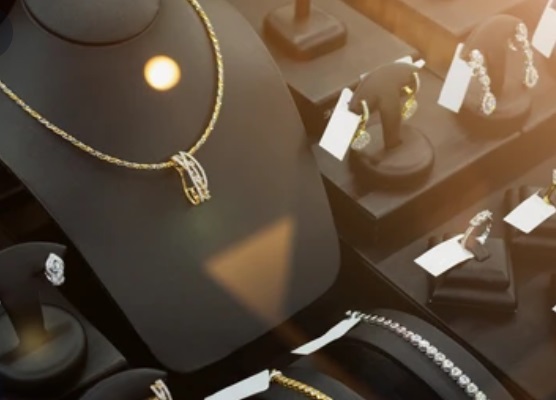
In today’s economic climate and market, profit margins for smaller players in the industry have been hammered because of online competition and the rise of lab grown diamonds.
Unless you have the financial muscle or big brand equity like Tiffany or Harry Winston, it is extremely hard for small-scale jewelers to mark retail prices really high and be able to sell their diamonds.
The truth is, diamonds are usually not the main profit makers that make jewelers money. When profit margins on loose diamonds are low, a lot of jewelers rely on settings or the sale of other gemstones to stay afloat.
And unlike diamonds which are treated like a commodity in the market, a jeweler can use a ring setting or mounting to add their unique value proposition to the consumer. They also have more control over their manufacturing costs and prices they can sell their settings at.
Are You Paying a Fair Price For a Diamond Ring?
It depends on what you define as “fair”.
Is paying a 200% markup on a Tiffany ring fair or foolish? Do you need to help the big brands pay for their marketing expenses and expensive retail locations by paying excessively more for their products? On the other hand, would you be considered a cheapo if you buy an unbranded diamond ring at a lower price?
If you asked the same questions to different people, you will get different answers depending on an individual’s values. Also, there is a big difference in the business operations between big stores and small retailers. And this makes it very difficult to use the same yardstick of “fairness” to compare prices.
I feel that as long as a jeweler doesn’t market their products unethically or try to rip their clients off by misrepresenting their product quality (i.e. selling uncertified diamonds), it is OK to pay a little more or a little less for your purchase.
The key is to understand what you are buying and to be making educated decisions when shopping for a diamond ring.
My personal guideline of a fair price is that it should NOT be 15% more than what it would cost me to find a like-for-like diamond online.
You see, I’m a practical person and I see no reasons to pay more for a diamond at any specific jeweler unless there is a compelling reason like a special ring setting or unique diamond attribute that isn’t available elsewhere.
Summary – Retail Markup on Diamonds

The purpose of this write-up isn’t to engage in public shaming of any companies or jewelry businesses but rather, it is to provide the consumer with a better idea of prices and what they are paying for.
The average markup on diamonds will vary from one seller to another because of the different overheads and profit margins they have. In general, you can expect businesses to pass their operating costs onto you.
Big brand names like Tiffany and Cartier spend a ton of cash on marketing, inventory costs and rentals in prime locations. As a result, their mark ups will be very high compared to online retailers operating on a different cost structure.
But bear in mind that, paying more for a diamond ring doesn’t necessarily translate into getting better quality. Vice versa, just because an online diamond store has lower prices and markups doesn’t mean that there is a compromise in quality or service standards.
In fact, the converse is often true. Online retailers generally offer better quality diamonds at much lower prices compared to physical retailers. The point I am driving across here is that the price tag alone doesn’t tell you whether a diamond is a good or a bad purchase.
Ultimately, the details (beyond just pricing) really do matter when it comes to selecting a beautiful diamond.
And there you have it. I hope this article offered useful insights into the markups that jewelers are charging. If you have further questions or need help with an engagement ring purchase, feel free to reach out to me via email or drop a comment below.
Related Articles
Leave A Comment

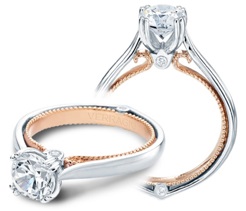
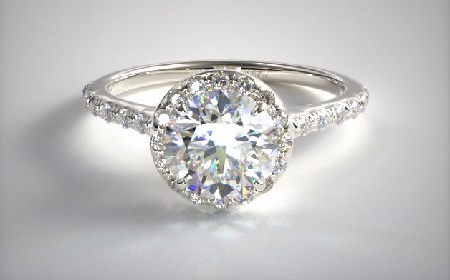
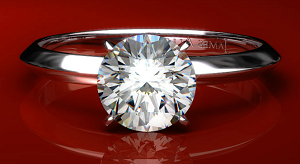
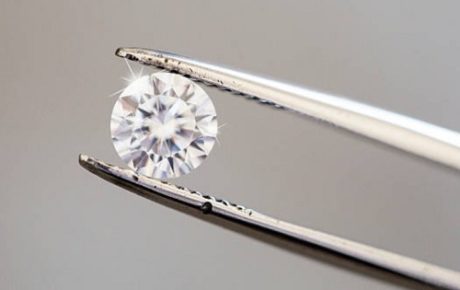









8 Comments
I’ve been to Zales recently and saw a couple of their engagement rings. They look very pricey compared to another jeweler in my area. Do you know much are engagement rings marked up and whether they are any guidelines on what is expensive and what isn’t? Zales charging about 200% markups doesn’t seem right given that most of their stuff is not certified.
Zales is pricey and they sell uncertified diamonds in their preset ring selections. This is a big red flag you need to beware of. As for markup, there really aren’t any official guidelines or rules. I mean, anybody can charge any amount for their products, right? As a consumer, you have a right not to buy if the price isn’t fair.
Does Tiffany or Cartier charging 200-250% diamond markup percentage on their engagement rings make them an “evil” corporation or engaging in rip offs? I don’t think so although I personally think it is a silly way to buy a diamond ring from such places.
This is due to their cost structure where there can be layers of business expenses such as inventory costs and rental overheads which the customer ultimately bears.
My personal rule of thumb is that any jeweler who charges more than 15% of online diamond prices will gravitate towards the expensive side. And if I were going to pay such a big premium, that particular jeweler had better offer me something that I can’t find elsewhere. For example, a particular ring design that’s unique or fulfilling a special request I have on diamond specs like a symbolic 0.88ct diamond and etc.
I’ve recently been to a store in new york city where the salesperson was telling me that they have a huge 30% off sale for their solitaire diamond rings. I saw some GIA certified rings and some that had appraisal reports. A 1 carat diamond ring was going on sale for $3,999 with an 18k white gold setting and I thought it looked like a decent purchase. But when I started to compare prices after I got home, I realized that their sale price wasn’t really much of a discount.
In general, advertisements or flyers screaming 50% OFF SALE! or “Liquidation Sale!” are scams that some jewelers use to draw the attention from the public. In most cases, you will probably end up paying more or equal to the ring’s original selling price. I’ve personally seen stores do a ridiculous retail markup on diamonds in the 200 to 300% ranges and then claim that they are selling them at half price. To the unsuspecting consumer who purchased discount rings, they are actually getting ripped off. Retailers that offer such sales often have an exorbitant markup in place before using a “Massive Sale” as a marketing illusion to lure in customers.
And sadly, this happens in real life more often than you think. At least you were smart enough to do some due diligence and compare prices before you made any commitments to buy a diamond ring.
Thanks for sharing how you determine the markup on diamonds using Rapnet. Do you have any free tools instead of a paid subscription with Rapnet? How much are diamonds marked up if I am buying from a country like Belgium, Antwerp? I was told that it is the capital of diamonds and I’m traveling there for a holiday next month.
Unfortunately, I don’t. You can try asking Rapnet for a free trial but I am not sure whether they offer that. The $70/month subscription plan is actually not that expensive if you intend to use it for trading or even as a one-off event. You can always cancel after 1 month of usage if you are only using it for a short time and $70 dollars isn’t that expensive if you are buying a diamond ring in the thousands of dollars. Otherwise, stick with buying from good, reputable businesses that I’ve vetted.
The diamond markup percentage at Antwerp is almost similar to what you will find at New York City or any major diamond trading districts. For retail consumers, there is no such thing as wholesale prices which is a scam to lure in customers. Unless you are dealing with tens or hundreds of diamonds at a go, expect to pay retail prices and markups can be as high as 300% as I mentioned in my write up.
How much are diamonds marked up when they change hands from a wholesaler to a retailer? I don’t get why diamonds are so expensive if they were so widely available and with a backdrop of rising lab diamond supply. What is the markup on diamonds that are made in the lab? Are they any difference between natural and lab stones in terms of margin?
Typically about 3-5% but it is dependent on the carat size of the diamond. When carat size gets large, mark ups go lower. For example, don’t expect the same profit margin on a 5 carat diamond compared to a 0.5 carat diamond.
Diamonds are expensive because of a few reasons. The first is that it costs quite a big sum of money to secure licenses to mine and the costly equipment that is being used. Basically, there’s a slew of operational costs to run mines efficiently. Also, the diamond supply is still somewhat heavily manipulated by miners like De Beers which hold auctions and sights to sell rough diamonds. They used to dictate prices when they had a monopoly of rough diamond supply. Although that monopoly has been broken up, there is still some of that legacy left in today’s world on how rough diamond sales are being conducted.
I would say that the profit margins on lab grown diamonds tend to be higher than naturally mined diamonds.